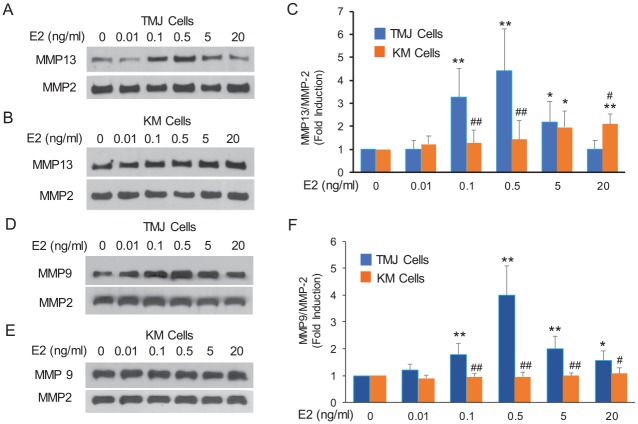Figure 4.
TMJ fibrocartilaginous cells are more sensitive to E2 than KM cells in the induction of MMP13 and MMP9. Early-passage fibrocartilaginous cells were cultured in serum-free, phenol-free media without or with increasing concentrations of E2 for 48 h. Cell-conditioned media was retrieved and assayed by Western blots for MMP13 and MMP9. MMP2 was used as an internal control, since our gene array results and E2 dose-response experiments showed little change in its expression by E2. Representative Western blots for MMP13 and MMP9 for TMJ fibrocartilaginous (A and D) and KM (B and E) fibrocartilaginous cells. Histograms of mean ± SD of pooled data from Western blots show significantly greater sensitivity and higher peak induction of MMP13 (C) and MMP9 (F) in the TMJ versus the KM fibrocartilaginous cells in response to E2. *P < 0.05 and **P < 0.01 vs. vehicle-treated control. #P < 0.05 and ##P < 0.01 vs. the same doses of E2-treated TMJ cell groups. E2, 17-β estradiol; KM, knee meniscus; MMP, matrix metalloproteinase; TMJ, temporomandibular joint.

